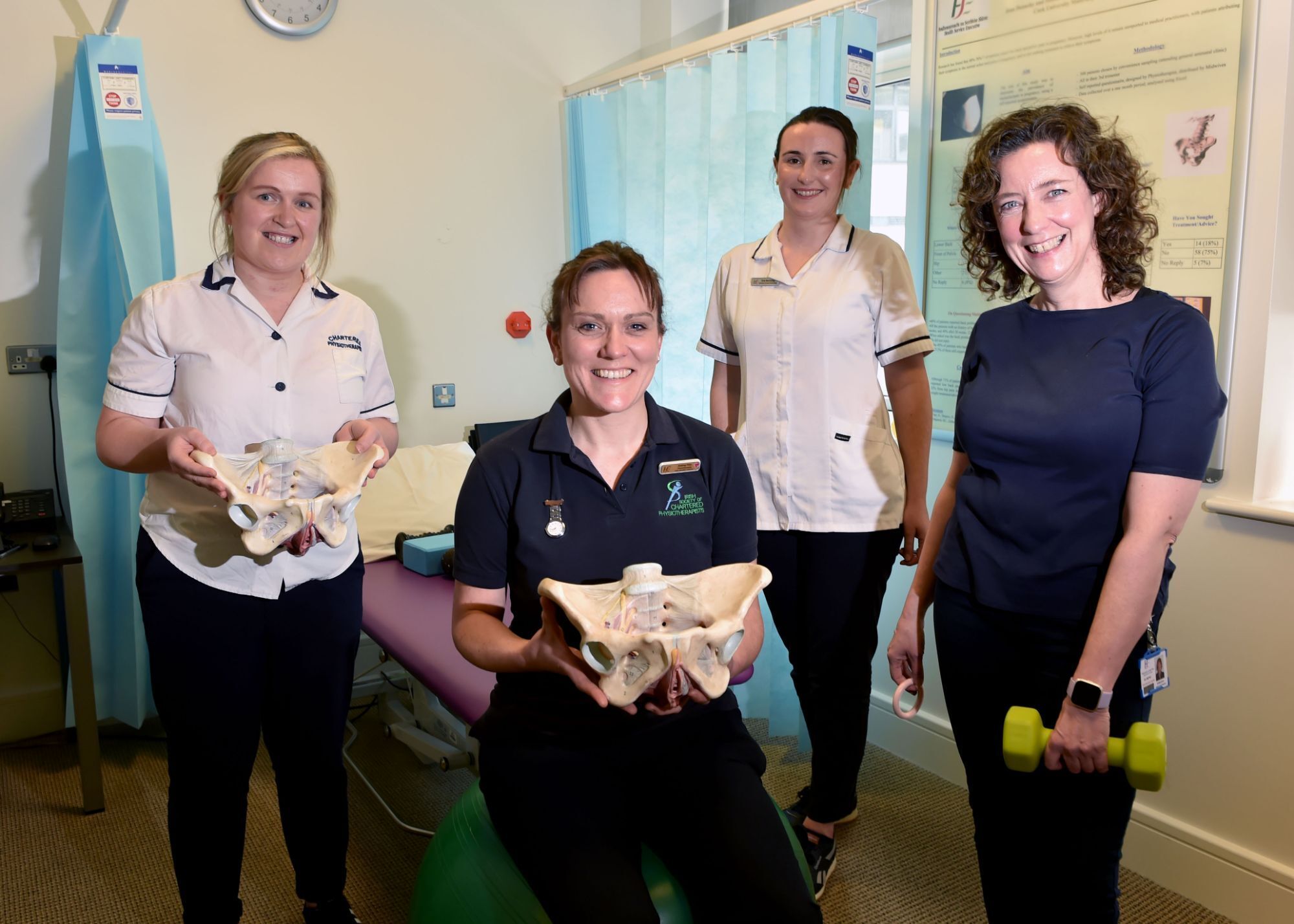Urogynaecology Tips & Advice
Coping with Urinary Incontinence
Seana Ryle, Senior Physiotherapist, CUMH, offers tips on simple measures that can help women improve the main symptoms of incontinence.
Urinary incontinence is the unintentional passing of urine. It’s a common problem thought to affect millions of people globally.
The main two types are:
1. Stress Urinary Incontinence (SUI): The involuntary leakage of urine during activities such as coughing, sneezing, lifting, laughing or exercising. SUI affects at least 10-20% of women, many of whom do not realize that there are simple, effective treatment options available. Certain things can increase the chances of urinary incontinence, including:
- Pregnancy & vaginal birth
- Obesity
- A family history of incontinence
- Increasing age- although incontinence is not an inevitable part of ageing.
2. Urge incontinence: A sudden and intense need to pass urine that cannot be put off. This can happen even when your bladder is not full. Urge incontinence is usually the result of over activity of the detrusor muscles, which control the bladder.
There are some simple measures you can do to see if they help improve your symptoms.
These may include:
- Lifestyle changes such as losing weight and cutting down on caffeine and alcohol (particularly so if you have urge symptoms).
- Pelvic floor exercises, where you strengthen your pelvic floor muscles by squeezing them
- Bladder training, where you learn ways to wait longer between needing to urinate and passing urine.

Bladder Training- A guide for Women
Ann Humphreys, Advanced Nurse Practitioner in Urogynaecology and Women’s Health at CUMH
How successful is bladder training?
Many women experience bladder problems at some stage in their lives. Three of the most common problems are frequency, urgency, and urge leakage.
Frequency means going to the toilet more than 7 times a day. If you get up to go to the toilet more than once at night, this is called nocturia.
Urgency is the sudden and overwhelming feeling that you need to go RIGHT NOW, and if you leak when you feel like this, it is called Urge Leakage
What is bladder training?
Bladder training is about getting rid of ad habits, learning good habits and putting YOU back in control, rather than your bladder controlling you and your life.
How do I regain bladder control?
- Bladder training programs help you to increase the time between visits to the toilet, help you increase the amount your bladder will hold, and help you control the feelings or urgency when the bladder contracts unnecessarily.
- Part of a bladder training program is learning to understand the messages that your bladder is sending you, which messages you need to listen to, and which messages you can ignore.
- Your bladder may have taken many weeks, months or years establishing its bad habits, so you will not regain your bladder control instantly.
How to overcome frequency:
- Check your urinary diary. How often are you going to the toilet during the day? If the visits are less than 2-3 hours apart, you need to try to increase the time between visits to the toilet.
- If you can hold on for your target time, and can do that for 3 or 4 days in a row, increase the time again. Gradually increase the time between visits to the toilet until you are going 2-3 hours during the day.
- Try cutting the 'just in case' visits to the toilet.
How to overcome urgency and urge leakage.
- Tighten your pelvic floor muscles as hard as you can and hold on for as long as you can. Keep doing this until the feeling of urgency goes away or is under control. Contracting the pelvic floor muscles helps to squeeze the urethra (tube from the bladder) shut and prevent leakage.
- Tighten your pelvic floor muscles quickly and as hard as you can, then let go. Repeat this several times in a row.
- Put firm pressure on the perineum (crotch area) by crossing your legs or sitting on a firm surface.
- Distract your mind as best you can.
- Change position if this decreases the feeling of urgency. Some people find leaning forward a little helps.
- Stay still when you get an urgent bladder contraction and control the urge. You will not be able to hold on, stay in control, and rush to the toilet all at the same time.
- Try not to jiggle up and down on the spot. Movement jolts the bladder and makes the problem worse
